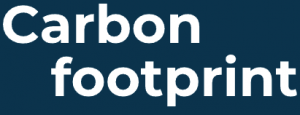CountEmissions 2: Detailed, derived, or modeled data
To calculate emissions and allocate them to shipments, data is needed. That seems simple, because it is data of the basis of business operations: how much energy/fuel has been used by a means of transport (vehicle/vessel), and what has been transported by that vehicle (quantity, origin and destination)? In practice, it is sometimes difficult to extract that data from different systems and link it together.
It becomes even more difficult if charters are used last-minute, to get data from those parties. In highly developed countries, many companies already have quite a few IT systems from which data can be extracted, and service providers who can arrange this. However, this is far from being the case everywhere in the world at that level: sometimes there is hardly any data available, or it is cumbersome or too expensive to collect it.
The CountEmissions proposal and the ISO standard take this into account. It talks about primary data and secondary data, about the difference between measuring, deducing and modeling.
The experience of the Top Sector Logistics shows that you can work with 4 classes of data quality, if you let them work explicitly in the calculations.
The 4 classes are:
- Primary data, detailed
- Measured fuel, good data on shipments, per day or week per vehicle
- Primary data, aggregated
- Measured fuel, good data on shipments, over a longer period of time and several vehicles together
- Route and vehicle translated into fuel based on standard consumption, good data on shipments, over a longer period of time and several vehicles together
- Secondary data, derived
- Data on shipments (detailed or aggregated), fuel consumption derived from shipment information (expected route, number of km’s driven) and common type of vehicle
- Data on shipments, use of CI’s measured at fellow companies in the same subsector
- Secondary data, Modeled
- Data on shipments (detailed or aggregated), fuel consumption derived from shipment information (route planner) and common type of vehicle, and general information
If each input number is labeled which class it is, the software that does the calculations can take that into account. The outcome (emissions of a shipment in the chain) can then show which percentage of the emissions are based on primary data, and which on secondary data. This way you can always start, see what the big contributions are, and improve along the way.
